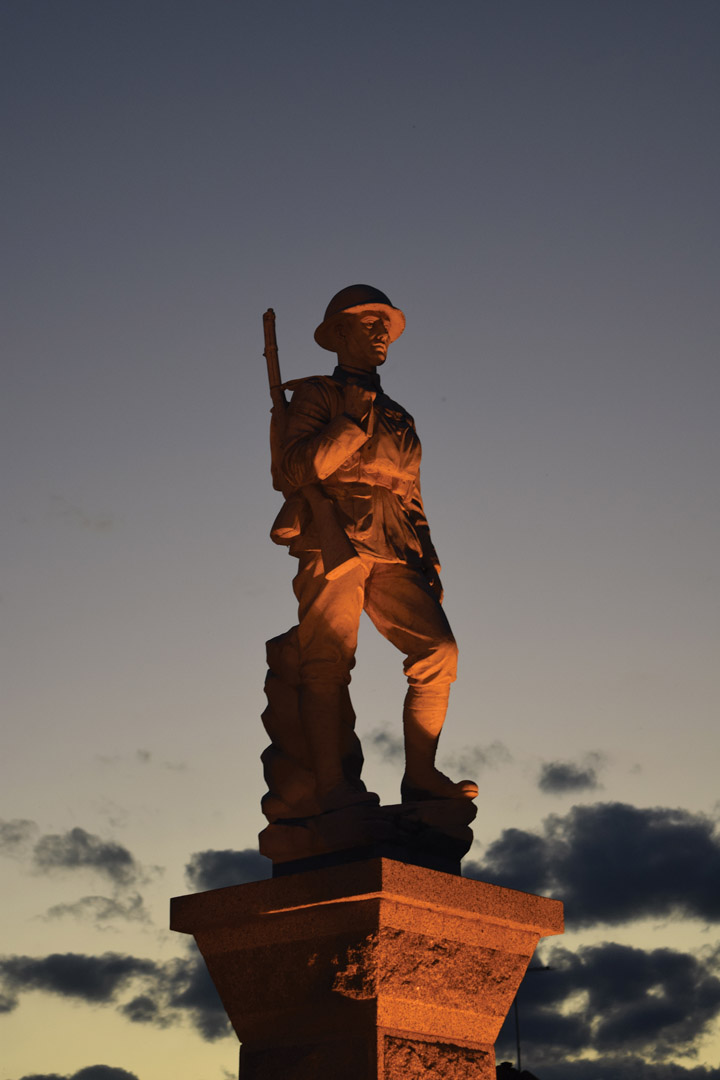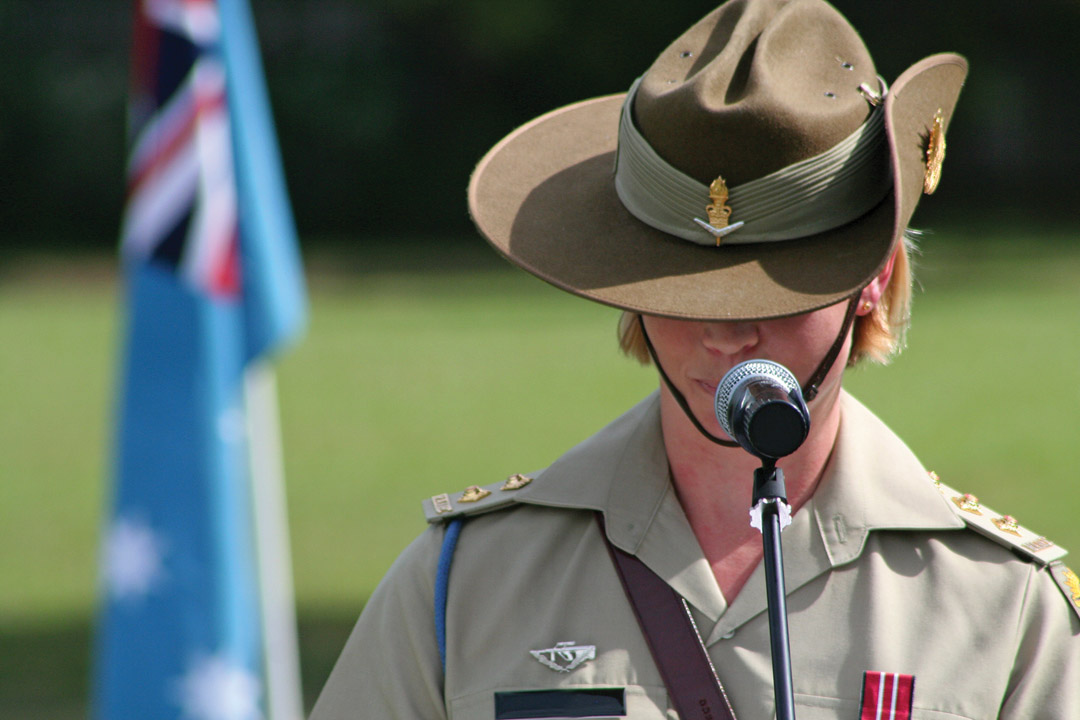
Remembrance Day (November 11) is an internationally recognised day of importance. Nations from all over the globe take time during the day to commemorate the end of World War I (WWI) with a period of a minute silence during the 11th hour, a rendition of “The Last Post” bugle song, a reading of “The Ode” and a variety of other traditional rituals. While some traditions vary from country to country—for example, the UK celebrates it on “Remembrance Sunday”, while the US celebrates Veterans Day on 11th day of the 11th month instead of Remembrance Day—the underlying reasons remain the same: venerating those who fought, and often died, for their country in times of war or in other events involving major military action.
These reasons are clear and justified and explain the global prominence of Remembrance Day and its accompannying commemorative services. But interestingly, the day is somewhat overshadowed in Australia and New Zealand by the existence of another day, which on the surface appears to celebrate the same thing—the sacrifices that soldiers have made for the nation. That day is, of course, Anzac Day.
The importance of the Anzacs

Tassiekarin—Getty Images
Anzac Day, which is observed on April 25 each year, is a day commemorating all Australians and New Zealanders who, according to the Australian War Memorial, “served and died in all wars, conflicts, and peacekeeping operations”. In contrast to the global nature of Remembrance Day, Anzac Day is specifically focused on celebrating national identity for countries like Australia, New Zealand and the various other nations that were a part of the Anzac Corps. The Anzac Corps was a multi-national army corps that fought in the Gallipoli campaign of World War One (then known as The Great War). And while it’s named after Australia and New Zealand—and these and a handful of other countries in the South Pacific are the ones that typically celebrate it—the corps also included British and Indian troops at varying points during their history.
Another point of difference is that unlike Remembrance Day, Anzac Day is a public holiday.
For a variety of reasons, Anzac Day has supplanted Remembrance Day as the national public holiday commemorating those who have served in both Australia and New Zealand, leading historian Romain Fathi to label the latter as “the poor cousin of Australian War commemoration”. Fathi explains the reasoning behind this: “In Australia, Anzac Day has addressed the question of the meaning of the war far better than Remembrance Day or Remembrance Sunday. It can acknowledge loss and suffering with a nod to the sacred, while simultaneously representing imagined distinct national values such as mateship, laconic humour and stoicism. This capacity to connect the national community to the numinous explains Anzac Day’s primacy over Remembrance Day.”
Due to the ways Anzac Day has supplanted the nature of Remembrance Day, attempts have been made to distinguish their purpose. However, the question remains: what do we think of when we commemorate Remembrance Day?
What Remembrance Day means to me
I’ve always struggled with the notions of nationalism or patriotism that society often propagates—especially on days like this. Part of this struggle comes from growing up in the Christian faith. Christianity teaches that life on Earth is merely one chapter in a far greater story—more important than specific nations or things is the mutual sharing of values such as love, kindness and respect. Indeed, Jesus states that His kingdom is not an earthly one, which is why His servants have not been fighting (John 18:36). This does not mean that Jesus denies the importance of earthly kingdoms or conflicts—but that His message is one that transcends borders or individual identity. Jesus’ kingdom is a truly universal one, where the focus is on helping and connecting with individuals of all kinds, instead of building nations. As a result, it can be difficult for me to feel allegiance to any specific nation or national struggle—especially when we consider the atrocities that have been committed or perpetuated all across the world in service to the abstract idea of nationhood.
This is one of the things that sets Remembrance Day apart from Anzac Day for me. I find Remembrance Day is well suited to reminding us about both the cost of conflict and the real reasons why people may find a cause worth dying for.
Freed from specific national ties, Remembrance Day allows us to take a step back and look at the greater context of war. While some wars are remembered as having unambiguous evils which we may fight against, such as the horrors perpetrated by Nazi Germany or Fascist Italy in World War II, Remembrance Day’s commemoration of the end of WWI highlights the reality—wars and conflict are rarely as simple or straightforward as they seem. Unlike WWII, WWI was the culmination of decades of complicated alliances and negotiations between imperial powers finally breaking down (an event which is often attributed to the assassination of Archduke Franz Ferdinand, then heir presumptive to the Austrian-Hungarian throne).
In this way, Remembrance Day is a reminder of the importance of communication and connection. The issues that were fermenting in nations went unaddressed by their leaders and their allies—leading to millions of deaths when they became untenable. Part of honouring the sacrifice that those who have fought in wars have made is a pledge to do better. To carry on their legacy, we should be “quick to listen, but slow to anger” (James 1:19).

Jimbo_Cymru—Getty Images
Unfortunately, Remembrance Day also shows us that listening is not always sufficient. As the Bible says, there is “a time to love and a time to hate, a time for war and a time for peace” (Ecclesiastes 3:8). Sometimes conflict is unavoidable and actions must be taken to defend ourselves—and others—from harm. By focusing on all those who have served, Remembrance Day highlights the multitude of ways in which this can occur. Some examples of this are obvious, such as Desmond Doss, the pacifist who became a conscientious objector because of faith conviction, but whose heroics saved numerous lives during WWII (recounted in the film Hacksaw Ridge). In remembering what has been lost, it is important to remember that war—like many things—has an impact far beyond what is initially seen.
Finally, Remembrance Day reminds us that war, like all earthly conflicts, is temporary. The day was originally known as Armistice Day, in honour of the ceasefire which was brokered on November 11 in 1918. While this does not diminish the pain or suffering that wars have propagated, it can be reassuring to know that even in the darkest chapters of history there is the promise of a better future. While I may struggle with Anzac Day due to its national ties, it is for this reason that Remembrance Day speaks to me and my faith. To go back to the core beliefs mentioned earlier, all nations and troubles of this world are temporary—and when they are gone we will be left with love, respect and understanding. The Bible reassures us that no matter how bad a conflict is on Earth or how many there may be, they are ultimately symptoms of a temporary struggle. Instead of being caught up in these issues, we should focus on spreading these key values—as they are what will remain when the final battle is over.
Ryan Stanton is a PhD student studying media and communications at the University of Sydney. While his thesis focuses on podcasts and games, he is keenly interested in the ways the media covers political and social issues.













